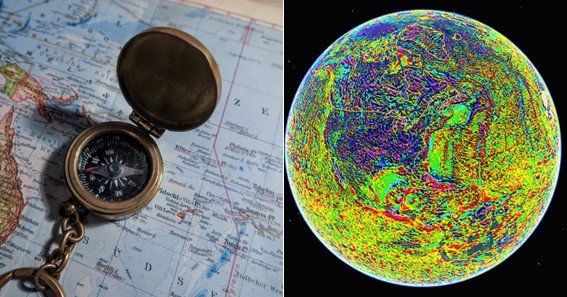Magnets have been central to navigation for centuries, starting with the magnetic compass, which revolutionized sea travel by providing reliable directional guidance. Today, magnets are still vital in various advanced magnetic navigation systems, ensuring accuracy and reliability in everything from aircraft to unmanned aerial vehicles (UAVs).
How Magnets Power Navigation Systems
Magnetic navigation relies on the Earth’s magnetic field to determine direction. Traditional magnetic compasses work by aligning a magnetized needle with the Earth’s magnetic field, indicating the cardinal directions. This simple yet effective tool laid the groundwork for modern navigation technologies.
Modern Magnetic Navigation Systems
- Magnetometers: Advanced magnetic navigation systems use magnetometers, which are sophisticated sensors that measure both the direction and strength of magnetic fields. These devices are essential in aviation and UAV navigation, where precise heading information is crucial. By integrating magnetometer data with GPS and inertial measurement units (IMUs), these systems can provide highly accurate orientation and positioning, even in environments where GPS signals are weak or unavailable.
- Marine and Aerial Navigation: In marine navigation, magnetic compasses remain a reliable backup for electronic systems. However, these compasses can be affected by local magnetic anomalies, which can cause errors if not properly accounted for. In aerial navigation, particularly in UAVs, magnetometers help maintain stability and correct orientation, which is critical for safe flight operations.
- Challenges and Innovations: While magnetic navigation systems are generally robust, they are susceptible to errors caused by external magnetic interference, such as nearby electronic devices or the metal structures of vehicles. Innovations like adaptive calibration techniques and the integration of multiple sensor types help mitigate these issues, ensuring that magnetic navigation systems remain reliable even in challenging conditions.

FAQ
- How do magnetic navigation systems work?
Magnetic navigation systems use magnetometers to measure the Earth’s magnetic field, determining direction and orientation. These systems are often integrated with GPS and other sensors to enhance accuracy. - What are the main uses of magnetic navigation today?
Magnetic navigation is used in various fields, including aviation (especially UAVs), marine navigation, and even in some land-based navigation systems as a backup for GPS. - Why are magnetometers important in UAV navigation?
Magnetometers provide precise heading information, which is crucial for UAVs to maintain correct orientation and stability during flight, especially in GPS-denied environments. - What challenges do magnetic navigation systems face?
Magnetic navigation systems can be affected by local magnetic anomalies and interference from electronic devices or metal structures, which can cause navigation errors if not properly managed. - How have modern technologies improved magnetic navigation?
Modern technologies have improved magnetic navigation through adaptive calibration, sensor fusion (combining magnetometers with GPS and IMUs), and advanced error correction algorithms, making these systems more accurate and reliable.










